How to Replace a Circular Saw Blade
POWERTEC on Oct 30th 2025
Keep Your Cuts Sharp, Clean, and Safe
A sharp blade isn’t just about precision; it’s about safety. Over time, even the best circular saw blades dull from resin buildup, heat, and friction. The result? Burned cuts, slower feed rates, and the risk of kickback. Replacing or cleaning your blade at the right time restores performance, protects your saw, and protects your hands.
Need help choosing the right blade first? Start with Circular Saw Blades 101: How to Choose the Right Blade and Types of Circular Saw Blades & When to Use Each.
How to Know When It’s Time to Replace a Blade
It’s not always obvious when a blade is past its prime. Look for these telltale signs:
- Burn marks or smoke: friction is rising, and teeth are dull.
- Increased motor strain: slower feed rate or the saw bogs down.
- Rough or chipped edges: more tear-out on the workpiece.
- More force required: you’re pushing harder to stay on line.
- Chipped or missing carbide teeth: unsafe—replace immediately.
Quick Tip: If you see two or more of these, it’s time to replace your circular saw blade—not just clean it.

How to Clean Your Circular Saw Blade
Before replacing a dull blade, try cleaning it—resin and pitch build-up are often the real culprits.
You’ll need:
- Shallow pan or tray
- Mild cleaner/degreaser: Simple Green, Formula 409, etc.
- Nylon or soft brass brush
- Safety gear: Safety work gloves and googles
Steps:
- 1. Unplug your saw or remove the battery and take off the blade.
- 2. Soak the blade in cleaner for 10–15 minutes.
- 3. Gently scrub between teeth to remove pitch and resin.
- 4. Rinse with water and dry completely before reinstalling.
Avoid harsh wire wheels—they can damage carbide-tipped teeth.

How to Replace a Circular Saw Blade Safely
Changing your blade is quick—do it safely and correctly every time.
Tools you’ll need:
- Wrench or Allen key (usually included with the saw)
- Spindle lock or locking pin
- New replacement blade
Steps to change your circular saw blade:
- 1. Disconnect power. Unplug the cord or remove the battery.
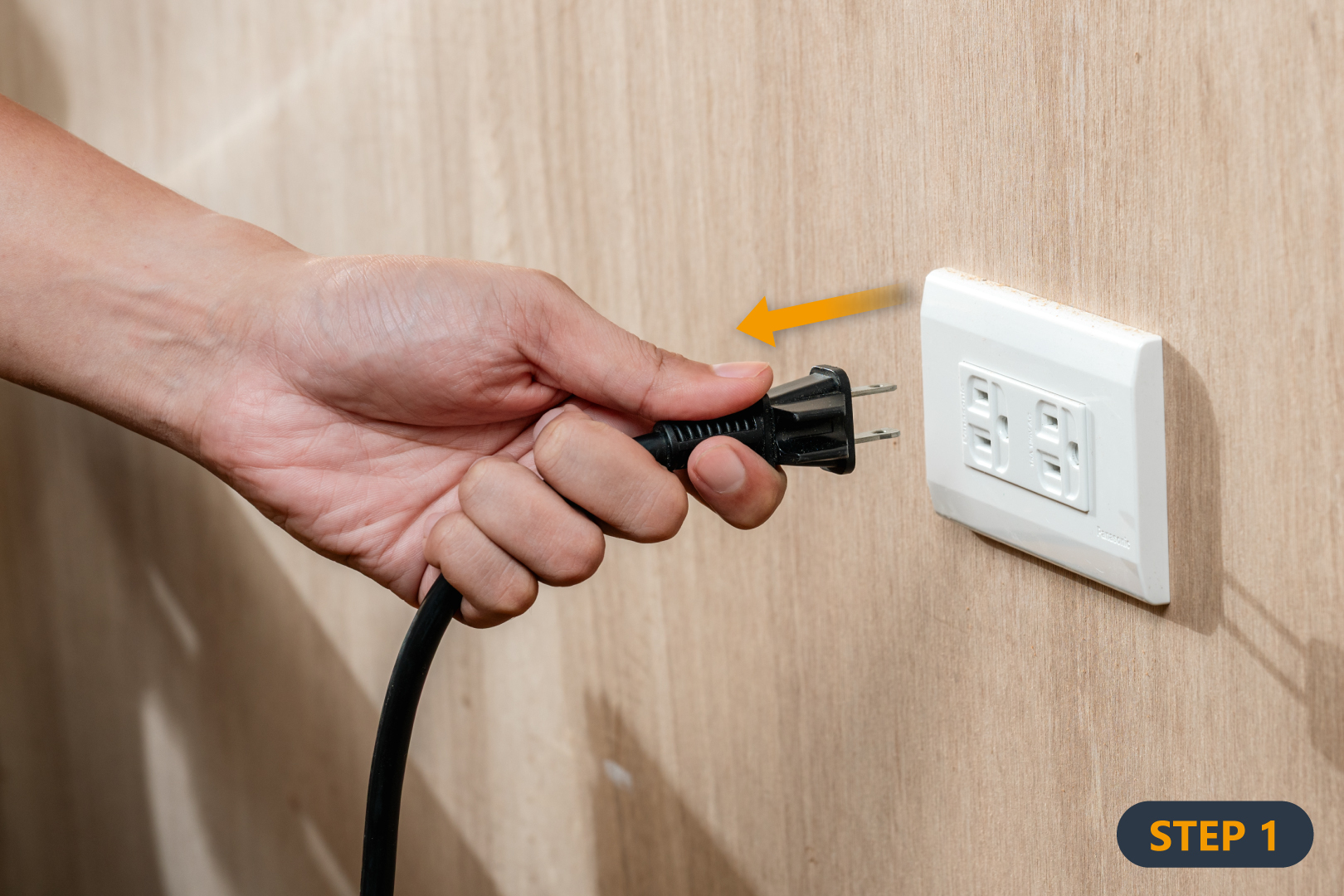
- 2. Lock the blade. Engage the spindle lock or locking pin.
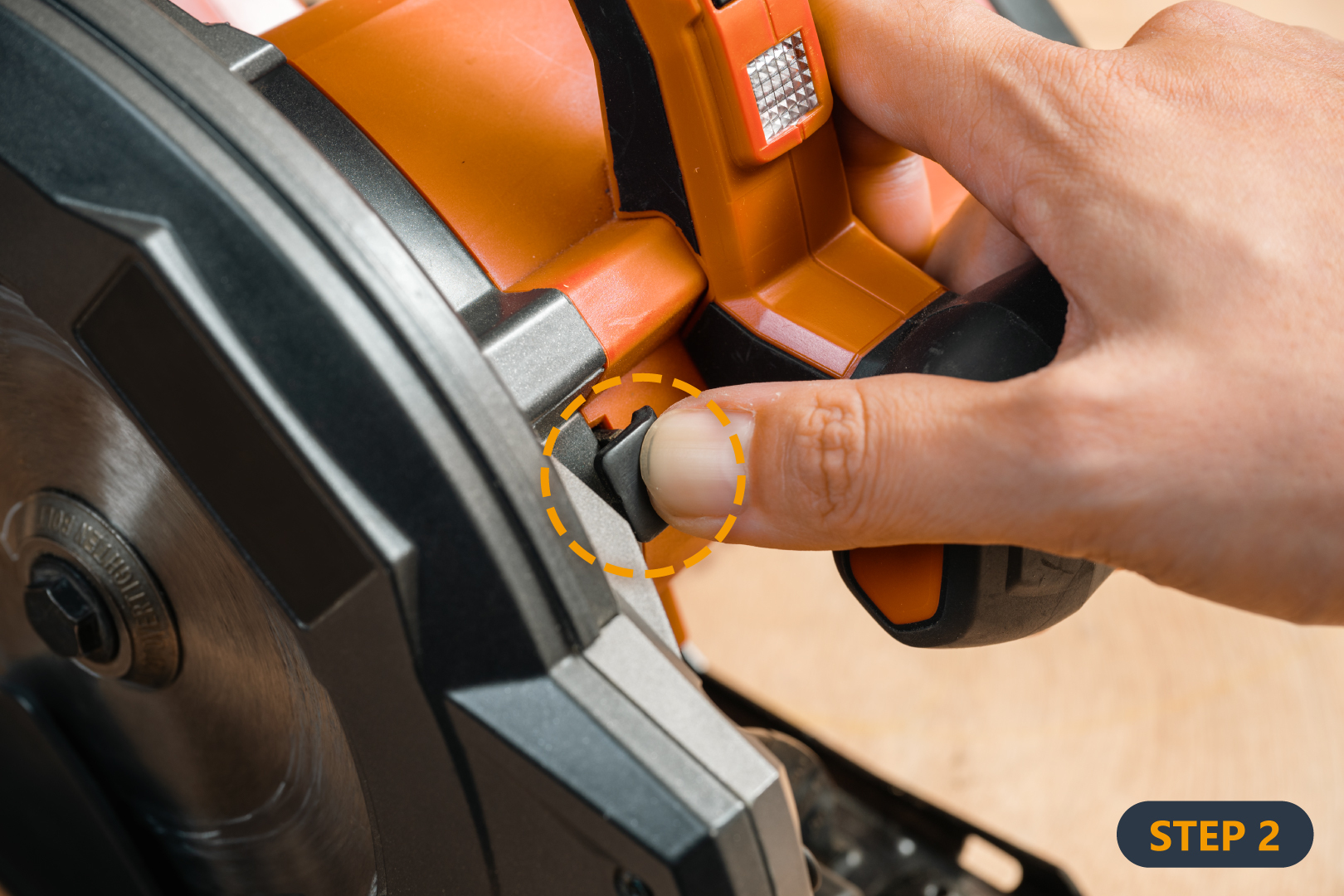
- 3. Loosen the arbor nut. On most direct-drive saws, loosen by turning clockwise.
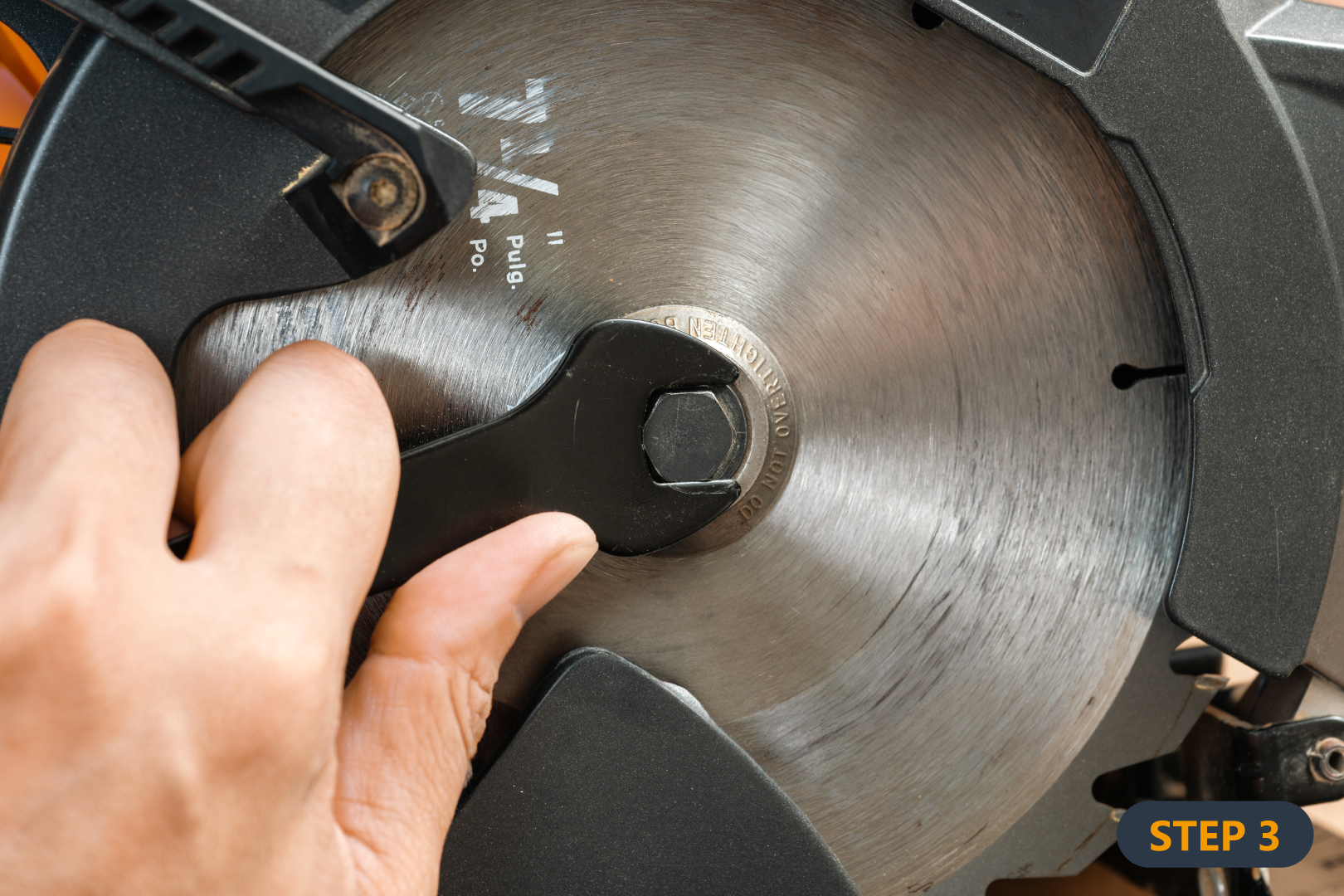
- 4. Remove the old blade and inspect for cracks, warping, or missing teeth.
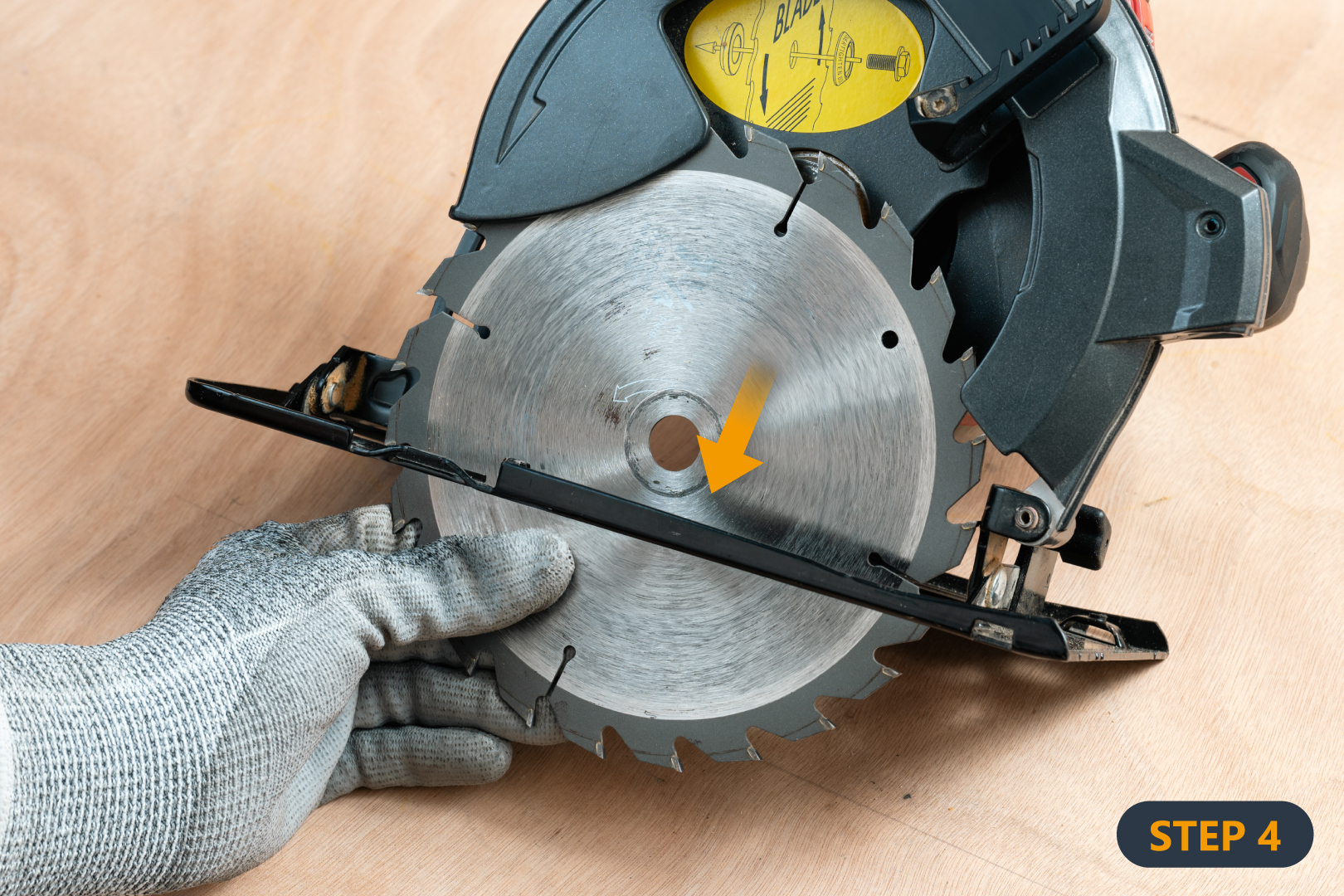
- 5. Install the new blade with the teeth facing the correct rotation indicated on the guard.
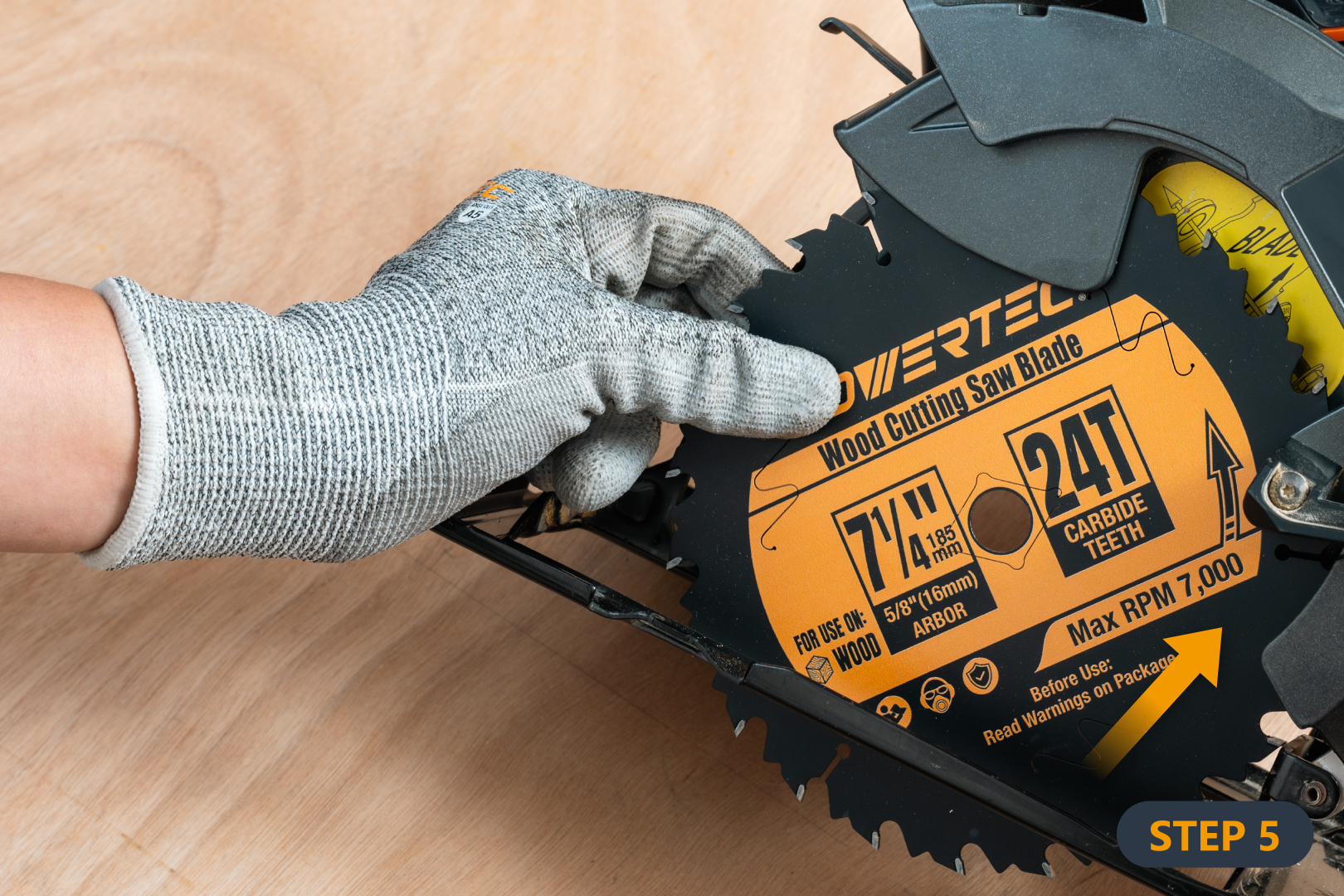
- 6. Tighten the arbor nut securely, then spin the blade by hand to confirm clearance.
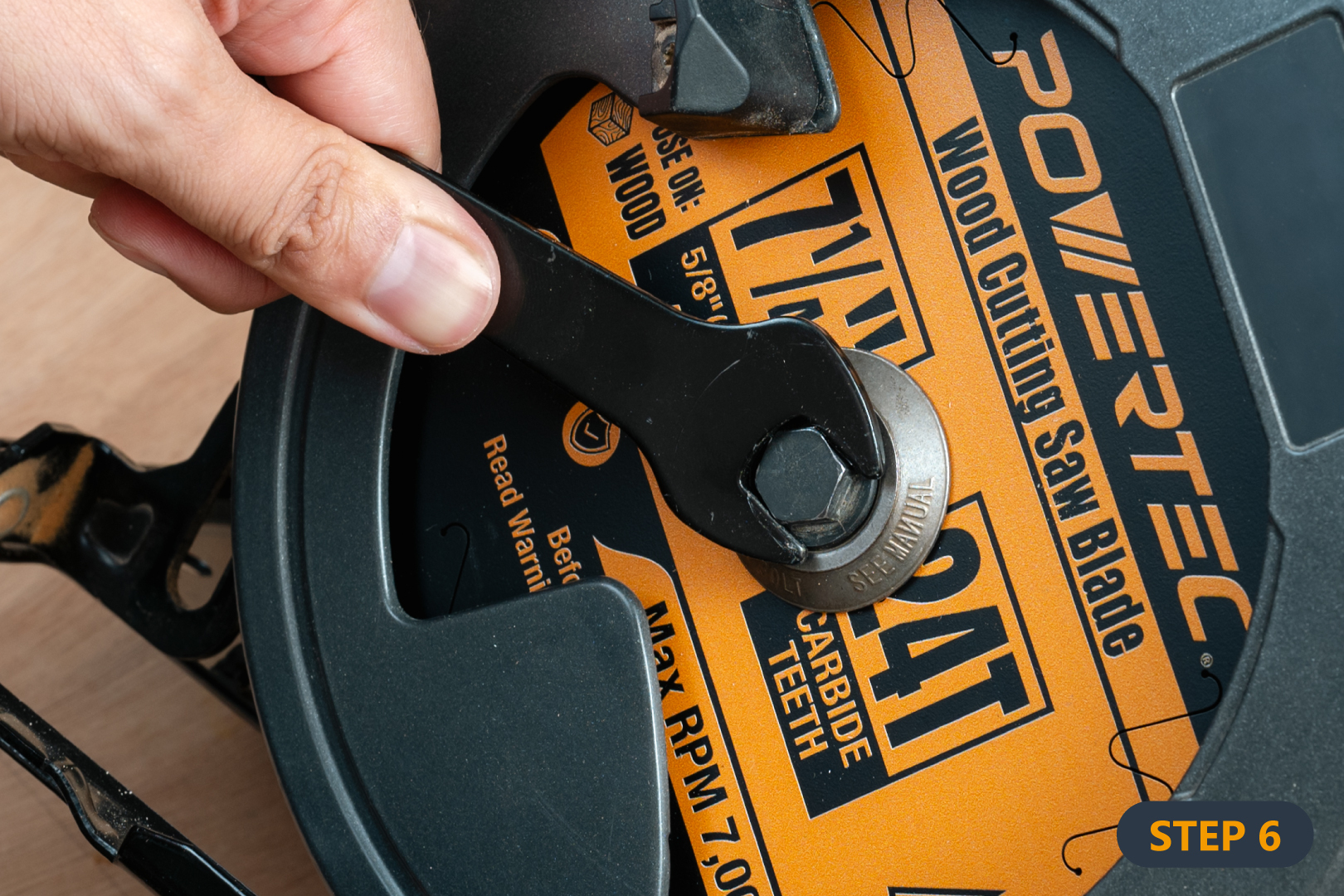
Pro Tip: Double-check the blade’s rotation arrow matches your saw’s direction before tightening.
Storage & Maintenance Tips to Extend Blade Life
- Store blades flat in cases or on hanging racks to prevent warping.
- Avoid blade-to-blade contact to prevent chipped teeth.
- Label blades by material (rip, crosscut, plywood) for quick selection.
- Use thin-kerf blades on cordless saws to reduce motor load.
- Clean resin buildup after cutting pine, MDF, or other resin-heavy stock.
- Inspect expansion slots and anti-kickback shoulders to ensure proper cooling and safe feed.
Recommended POWERTEC Replacement Blades
| Blade | Ideal Use | Link |
|---|---|---|
| 7-1/4″ 24T Carbide | Ripping & Framing | View Blade › |
| 10″ 40T General Purpose | Everyday DIY Projects | View Blade › |
| 7-1/4″ 60T Finish | Plywood & Trim | View Blade › |
6. Safety First — Always
- Wear PPE: eye and ear protection every time.
- Wait to lift: let the blade stop completely before setting the saw down.
- Inspect blades: never use blades with cracked or missing teeth.
- Stabilize the work: use clamps or supports for safe, straight cuts.
- Respect RPM ratings: stay within the blade’s listed speed.
For official guidance, visit OSHA Woodworking Safety.
Final Takeaway
Clean, sharp blades are safer, faster, and deliver pro-level results. Learn how to replace a circular saw blade the right way, keep it clean and stored properly, and pair your saw with the right POWERTEC replacement to keep every cut crisp and every project on point.
FAQs About Replacing a Circular Saw Blade
Q: How often should I replace a circular saw blade?
A: It depends on how frequently you use it and the materials you cut. For regular DIY or job site work, replace your circular saw blade every 6–12 months—or sooner if you notice burn marks, rough edges, or increased motor strain.
Q: Which direction should a circular saw blade spin?
A: Typically, for right hand circular saws, it turns counterclockwise when viewed facing the blade. For left hand saws, it turns clockwise when facing the blade. Always match the blade’s rotation with the direction indicated on your saw’s guard or housing.
Q: Can I sharpen my circular saw blade instead of replacing it?
A: Yes. Carbide-tipped blades can be professionally resharpened 3–5 times before replacement. Replace blades that are warped, cracked, or have missing teeth.
Q: Why does my circular saw burn the wood while cutting?
A: A dull or dirty blade creates friction and heat, causing burn marks. Try cleaning the blade with a mild degreaser or replace it if cleaning doesn’t improve performance.

